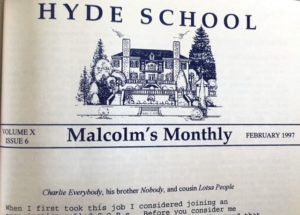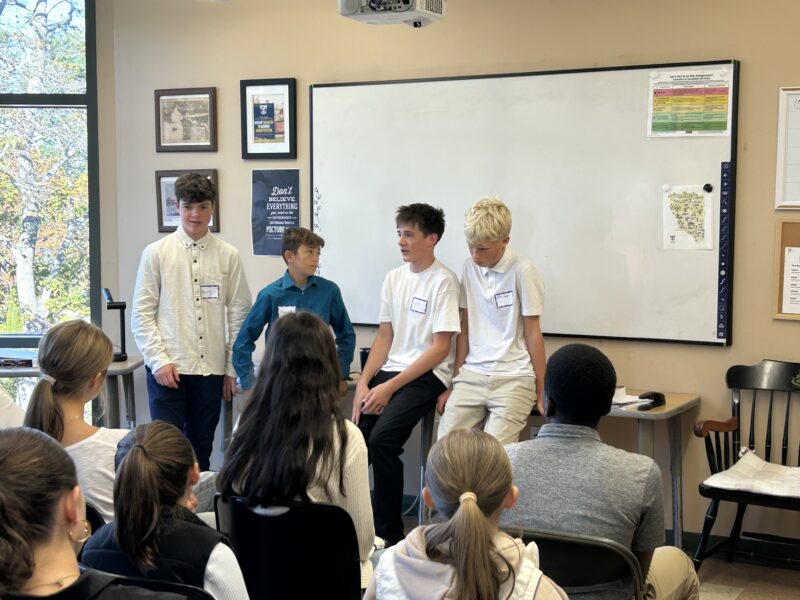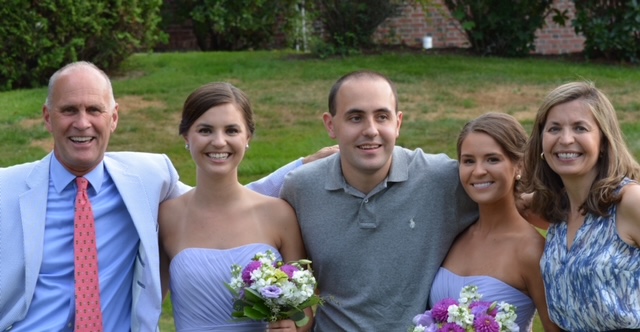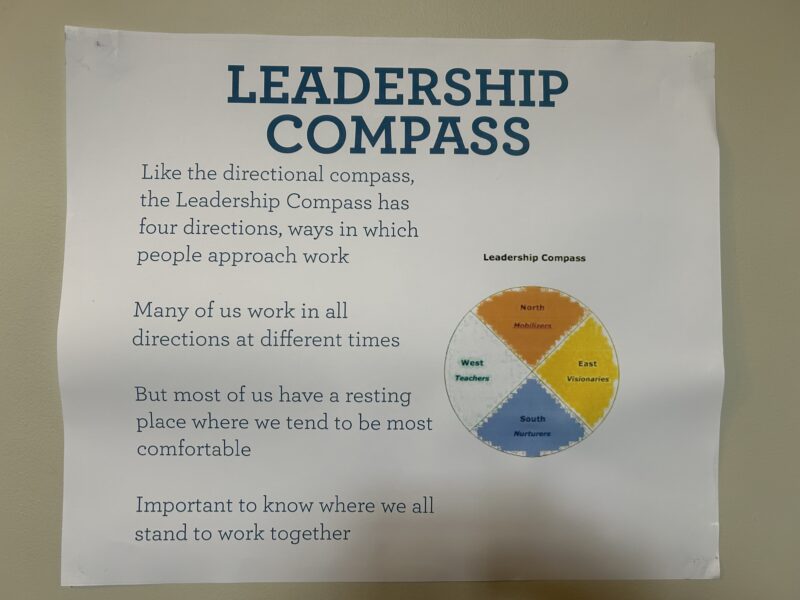
Back in my head of school days (1985-98), I used write a newsletter called Malcolm’s Monthly. From the April, 1993 issue:

The Effort Savings Bank
It was the weekly school meeting and I was hawking my “bank,” a pet concept of mine that might be defined as follows:
Any effort I expend toward my best or in helping others do their best goes into a a mystical savings bank where it accrues interest and returns to me in the future, sometimes when I least expect it. This is a tool that releases me from undue worry about the outcome of my efforts. Should I strive to do something and faiI, I try to imagine that my efforts will materialize on some future endeavor. Whenever I get lucky, I try to imagine that my good fortune is due, in part, to efforts expended on past endeavors, some that I may not even remember. It all boils down to the faith that all effort eventually pays off.
The students presented a somewhat skeptical audience:
- To the doubting student who complained about ending up with a D+ on a paper despite working on it for many hours, I replied, “Wow! Just think of the huge dividends when that annuity matures!”
- A charismatic contrarian entered the fray: “Last fall I scored the winning goal in sudden death overtime after loafing throughout regulation. So much for your theory.” (The crowd roars: “Yeah!!!”) Me: “The bank paid interest on past effort. Keep loafing and the bank will close out your savings account.” (The crowd whispers: “What’s a savings account?”)
The following story comes from my personal journal, written when I “discovered” the Effort Savings Bank at the NYC Marathon in 1987. A year earlier, I had dropped out of that marathon somewhere in Brooklyn (Mile #13, maybe?) — IT band problems — after a very intense training regimen. I came to believe that the work I put into that first marathon paid off when I tackled my second. Even if I’m wrong, I’ve discovered that there’s no harm in believing this. Here’s part of the story:
I saw the first wheelchair near the end of the Verrazano Narrows Bridge. I was struck by the extent to which the other runners, presumably veteran marathoners, went out of their way to cheer this woman on. I wondered, “Are they sapping their strength?” What I learned a few hours later was very much to the contrary: They were actually making investments in their own marathons.
It was clear that the runners who were cheering on the wheelchair entrants were among the more confident participants in the race. I wondered, “Am I missing something?” It began to dawn on me that a reciprocity of energy was occurring between the runners and the wheelchair participants. Those in the wheelchairs seemed to move their arms faster; the runners appeared to receive a booster shot of resolve. A bond of trust had formed between the two.
As I ran up First Avenue, I said to myself, “When in Rome…” Thus, I began to encourage other runners and wheelchair participants. While observing a woman hobbling along on her artificial legs, I offered a few words of encouragement while making a silent vow to finish the race in her honor. I believe we helped each other finish.
Many marathoners have similar stories. Ken, a student of mine, ran in his first marathon at Boston in 1988. His confidence and his legs began to falter as he approached the 17-mile marker. At the very moment he was going to quit, a senior citizen pierced his negative teenage meditation: “I won’t quit if you don’t.” An old salt of the roads, he had sensed the weakening resolve of his younger colleague. So, they trudged onward thru Newton and over Heartbreak Hill, exchanging clipped phrases every half mile or so. A few miles from the finish, the old man turned to Ken and said, “I’ve got to drop out. Old knee problem kicking in. You can go it alone. Finish for both of us!” Ken understood. With tears in his eyes, he jogged to the finish line at the Prudential Center, never to see his mentor again.
Over the years, I probably could not count the number of times I have heard a parent or teacher say to a kid, “Honey, you can be anything you want in life, so long as you are willing to pay the price.” Sorry to be the skunk at the lawn party, but that always sounds like finger nails on a chalk board to me.
Q: The main problem with it? A: It’s not true.
I like the spirit of what Andrew Carnegie (1835-1919) said over a century ago: “The average person puts only 25% of his energy and ability into his work. The world takes off its hat to those who put in more than 50% of their capacity, and stands on its head for those few and far between souls who devote 100%.”
So, I say to kids, “Can you be anything you want to be? Probably not. But work your tail off and you will like the way things turn out. Start making deposits and I’m betting you’ll find that the harder you work, the luckier you’ll get.”
Onward, Malcolm Gauld


